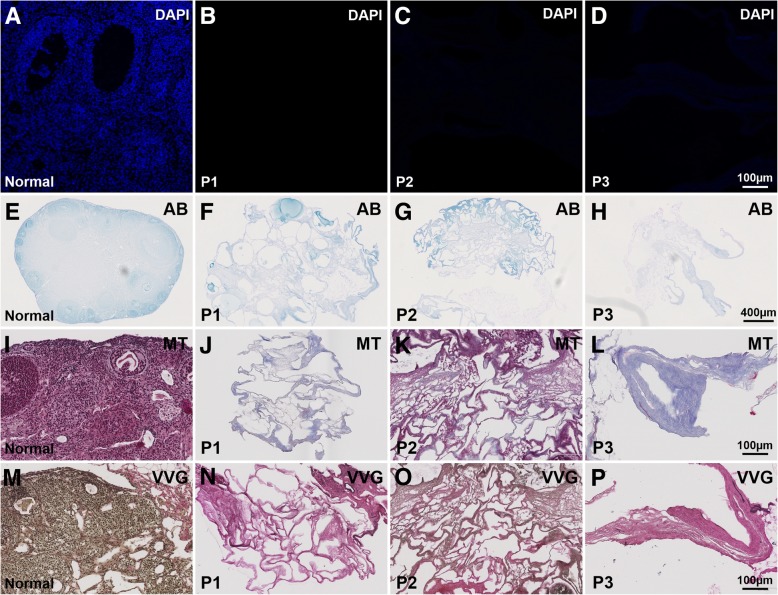Fig. 3.
Fluorescently DAPI-stained tissue sections (blue; a-d) indicated a successful removal of DNA from the decellularized tissue and only a faint blue could be visualized in protocol (P) 3-generated scaffolds. Alcian blue (AB), which stains glycosaminoglycans showed that ovaries treated with the SDC-based P2 preserved the protein structures and maintained the original GAGs organization better compared to SDS-treated ovaries (P1 and P2; f-h). Masson’s trichrome (MT) staining showed preserved collagen structures for all ovarian scaffolds (blue; j-l). However, P2-treated ovaries stained a more distinct red-blue appearance that may indicate a higher presence of collagen and extra cellular keratin fibres. Verhoeff van Gieson staing (VVG; m-p) also suggested a better preserved ECM after the SDC-treatment (P2) compared to the other two protocols tested. No visual elastic fibres (stained black/brown; collagen stains red) appeared in the P1- or in P3-treated ovaries, whereas this was obvious for the stained ECM-structures from the ovarian scaffolds generated by P2 (N-P). DAPI, 4′,6-diamidino-2-phenylindole; GAGs, glycosaminoglycans; ECM, extracellular matrix; SDC, sodium deoxycholate

